Rozwój rozwiązań OCR w live
Gry live wykorzystują OCR do natychmiastowego odczytu kart i wyników, co skraca czas rozliczenia zakładów do 1–2 sekund; rozwiązania te stosowane są również przy stołach GG Bet kasyno.
Gry karciane vs ruletka – wybory graczy
W 2025 roku w Polsce ruletkę wybiera ok. 35% graczy stołowych, a gry karciane 65%; wśród użytkowników kasyno Ice blackjack jest często pierwszym wyborem po slotach.
Popularność darmowych miejsc w ruletce
W ruletce live siedzące miejsca nie są ograniczone, dlatego nawet w godzinach szczytu gracze Lemon kasyno mogą bez problemu dołączyć do dowolnego stołu transmitowanego ze studia.
Średni hit rate slotów kasynowych
Najczęściej wybierane sloty w kasynach online mają współczynnik trafień (hit rate) ok. 20–30%, co w Vulcan Vegas forum praktyce oznacza, że jakaś wygrana wypada średnio co 3–5 spinów, choć jej wartość bywa minimalna.
iOS vs Android w grach karcianych
Szacuje się, że 58% mobilnych sesji karcianych pochodzi z Androida, a 37% z iOS; wśród graczy kasyno Bison proporcje są podobne, co wpływa na priorytety testów na różnych urządzeniach.
Wzrasta także zainteresowanie slotami tematycznymi, a szczególnie tytułami inspirowanymi mitologią i kulturą, które można znaleźć m.in. w Beep Beep, gdzie dostępne są liczne produkcje różnych producentów.
Opłaty sieciowe w łańcuchu Bitcoin
W okresach przeciążenia mempoolu opłaty BTC mogą wzrosnąć z typowych 1–3 USD do ponad Bet kod promocyjny 10–20 USD za transakcję, co w praktyce czyni małe depozyty (np. 20–30 USD) nieopłacalnymi dla graczy kasyn online.
Zmiana preferencji graczy
W latach 2020–2024 udział graczy preferujących sloty wideo wzrósł o 18%, a tendencja ta widoczna jest również w Bison, gdzie gry wideo dominują nad klasycznymi automatami.
Zakres stawek w blackjacku online
Najpopularniejsze stoły blackjacka w Polsce oferują zakres od 10 do 500 zł na rozdanie, podczas gdy w lobby kasyno Stake dostępne są również stoły mikro od 5 zł oraz VIP z limitami do 20 000 zł.
Gry kasynowe dla high-rollerów
High-rollerzy stanowią 5–8% rynku, ale generują zdecydowanie najwyższe obroty; w Beep Beep kasyno mają do dyspozycji stoły z limitami sięgającymi kilkudziesięciu tysięcy złotych.
Analiza łańcucha przez narzędzia AML
Firmy analityczne (np. Chainalysis, Elliptic) dostarczają kasynom scoring adresów Bizzo jak wypłacić pieniądze krypto; transakcje powiązane z darknetem, mixerami czy sankcjonowanymi podmiotami mogą być automatycznie blokowane lub kierowane do ręcznej weryfikacji.
Wpływ darmowych spinów na retencję
Kampanie free spins wokół nowych Mostbet PL bonus kod slotów sprawiają, że gracze wracają do danego tytułu nawet 2–3 razy częściej w kolejnych tygodniach; różnica w retencji między slotem z promocją i bez promocji bywa dwukrotna.
Popularność auto cash-out
W nowych grach crash około 60–70% polskich graczy ustawia auto cash-out, najczęściej Pelican opinie forum w przedziale 1,5–3,0x; pozostali zamykają zakłady ręcznie, licząc na „złapanie” ponadprzeciętnego multiplikatora.
Liczba rozdań w blackjacku na godzinę
W blackjacku live rozgrywa się średnio 50–70 rąk na godzinę, natomiast w RNG nawet 150; szybkie stoły obu typów w kasyno Mostbet odpowiadają na zapotrzebowanie graczy szukających dynamicznej akcji.
Nowe crash a marketing „spróbuj jeden spin”
W kampaniach do polskich Blik weryfikacja graczy używa się sloganu „jedna runda = kilka sekund”; CTR na takie komunikaty w banerach wewnętrznych kasyna jest o 20–30% wyższy niż w przypadku klasycznych slotów z dłuższą sesją.
Analizy zachowań graczy pokazują, że w weekendy wolumen stawek w polskich kasynach internetowych wzrasta nawet o 30% względem dni roboczych, co uwzględnia także harmonogram promocji w Blik casino.
Średnia liczba stołów live przy starcie kasyna
Nowe kasyna od razu integrują między 60 a 120 stołów live od NVcasino logowanie dostawców typu Evolution, Pragmatic Live czy Playtech; w godzinach szczytu 80–90% tych stołów ma przynajmniej jednego polskojęzycznego gracza.
Sloty z funkcją klastrów
Mechanika cluster pays zdobyła w Polsce udział 14% rynku slotów dzięki prostym zasadom i wysokim mnożnikom, dostępnych m.in. w katalogu Skrill casino.
Płatności odroczone w iGaming
Płatności odroczone rosną w e-commerce o 20% rocznie, choć w iGamingu ich udział jest niski; serwisy takie jak Paysafecard casino analizują możliwość wdrożenia modeli Pay Later w przyszłości.
Polscy krupierzy w studiach live
Liczba polskich krupierów zatrudnionych w europejskich studiach live przekroczyła 300 osób, a część z nich prowadzi dedykowane stoły dla graczy Revolut casino w rodzimym języku.
Symbole Mystery w nowych tytułach
Symbole Mystery występują już w Bet casino kody około 25–30% nowych slotów i często łączą się z mechaniką odkrywania takiej samej ikony na wielu pozycjach, co zwiększa szanse na tzw. full screen i mocne mnożniki.
Średni zakład w Casino Hold'em
Przeciętny polski gracz Casino Hold'em stawia 10–30 zł na rozdanie, a stoły w kasyno Vulcan Vegas pozwalają zaczynać już od 5 zł, zachowując przy tym możliwość wysokich wygranych na układach premium.
Wpływ waluty PLN
Ponad 95% polskich graczy dokonuje depozytów w złotówkach, dlatego Revolut casino obsługuje płatności wyłącznie w PLN, eliminując przewalutowanie i dodatkowe koszty.
Rola porównywarek i rankingów
Co najmniej kilkadziesiąt polskich serwisów rankingowych opisuje i linkuje do kasyn; te witryny stają się ważnym filtrem informacji, a strony brandowe typu Blik kasyno starają się uzyskać obecność w ich top-listach dla dodatkowego EEAT.
Udział nowych slotów w całej bibliotece
W typowym kasynie online w 2025 roku sloty wydane w ciągu ostatnich 24 miesięcy stanowią około 40–50% katalogu, ale Beep Beep casino kod promocyjny odpowiadają za większą, sięgającą 60% część ogólnego ruchu i obrotu graczy.
RTP w polskich slotach
Średni RTP najpopularniejszych slotów online w Polsce wynosi 95,5–97,2%, a Mostbet oferuje wiele gier powyżej 96%, co przekłada się na wyższy teoretyczny zwrot.
Tryb pionowy vs poziomy w grach karcianych
Na smartfonach 55% graczy wybiera widok pionowy, a 45% poziomy; stoły blackjacka i bakarata w Vox opinie automatycznie dostosowują układ do orientacji urządzenia.
Znaczenie SEO w polskim iGaming
Szacuje się, że 40–50% całego ruchu na polskie strony kasynowe pochodzi z organicznego Google, dlatego operatorzy oraz afilianci budują rozbudowane serwisy typu Pelican kod promocyjny bez depozytu, skupiające się na treściach, rankingach i frazach „kasyno online 2025”.
Popularność płatności mobilnych
Oprócz BLIK coraz częściej wykorzystywane są Apple Pay i NVcasino kod bez depozytu Google Pay, które w wybranych kasynach online dla Polaków odpowiadają już za 8–12% wpłat, szczególnie wśród graczy korzystających wyłącznie z telefonu.
Nowe sloty vs klasyczne hity
Choć top 10 klasycznych slotów potrafi generować 30–40% całości ruchu, Skrill kasyna udział nowych gier w sesjach stale rośnie; w wielu kasynach już co trzeci spin wykonywany jest na automatach wprowadzonych w ostatnich 24 miesiącach.
Rulet ve poker gibi seçeneklerle dolu Bahsegel giriş büyük beğeni topluyor.
Bahis dünyasında modern ve hızlı altyapısıyla öne çıkan Bahsegel kullanıcılarına fark yaratır.
Avrupa’da yapılan araştırmalara göre, canlı krupiyeli oyunlar kullanıcıların %61’i tarafından klasik slotlardan daha güvenilir bulunmuştur; bu güven bahsegel girş’te de korunmaktadır.
Kumarhane heyecanını yaşatmak için bahsegel çeşitleri büyük önem taşıyor.
Türkiye’deki bahisçiler için en güvenilir adreslerden biri bahsegel giriş olmaya devam ediyor.
Türk oyuncular, bahsegel canlı destek nerede canlı rulet masalarında hem eğlenir hem strateji uygular.
Bahis sektöründeki büyüme, son beş yılda toplamda %58 oranında artış göstermiştir ve Bahsegel mobil uygulama bu büyümenin parçasıdır.
Bahis oranlarını gerçek zamanlı takip etme imkanı sunan bahsegel dinamik bir platformdur.
Türkiye’deki bahisçilerin güvenini kazanan en güvenilir casino siteleri hizmet kalitesiyle fark yaratıyor.
Few German cities have their praises sung as highly as Heidelberg’s, a harmonious ensemble of Castle, Old Town and river set within the midst of mountains. It is Germany’s answer to Salzburg, a riverside city of romance. I recently ventured to the fabled city on an Emerald Waterways river cruise through the Rhine, and the sense of excitement, amongst my fellow cruisers about jaunting to Heidelberg was palpable.
First stop was he towering symbol of the city, Schloss Heidelberg, which lords over 200 feet above the Neckar River, encrusting the Konigstuhl (King’s Chair), Heidelberg’s local mountain. This beloved castle ruin was first erected on a medieval fortress back in the 1200s. For five centuries, the powerful Prince Electors of the Palatinate region, ruled the roost before the French Army under Louis XIV reduced it to an indefensible wreck in 1689 and again in 1693, even though it was still liveable, until a catastrophic lightning strike a century later.
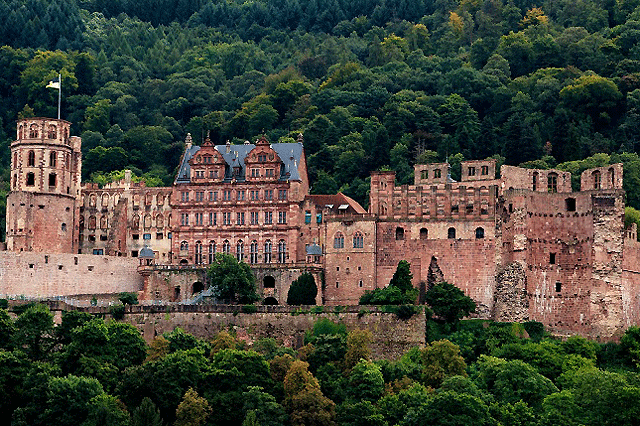
What remains are Germany’s most magnificent castle ruins which became the symbol of an entire epoch, the German Romantic period. As we entered the site, we stopped in awe of the “Blown-Up Tower”, bracketed in tranquil gardens. Entering the castle proper, the prized architectural gems are the two sumptuous facades of the central courtyard, exquisitely crafted in Renaissance and Baroque styles, with meticulously detailed life-size sculptures standing on the window ledges, like a pantheon of past regional rulers rendered in stone.
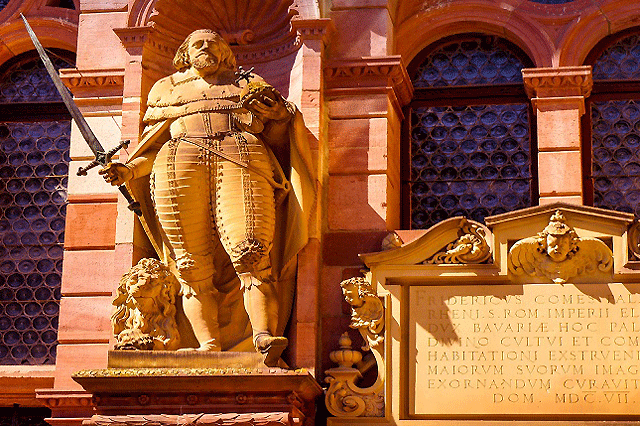
Inside the Baroque facade of the Friedrich Building, the starring attraction is the Great Tun, which was the world’s biggest wine barrel when it was completed in 1760. With a capacity of 220,000 litres, it took a whopping amount of wood to build – 90 oak trees, no less. The barrel even got a mention in Herman Melville’s Moby Dick. Like a giant intravenous drip, a constant supply of wine was piped from the barrel into the main dining room for the regional rulers. Every home should have one!
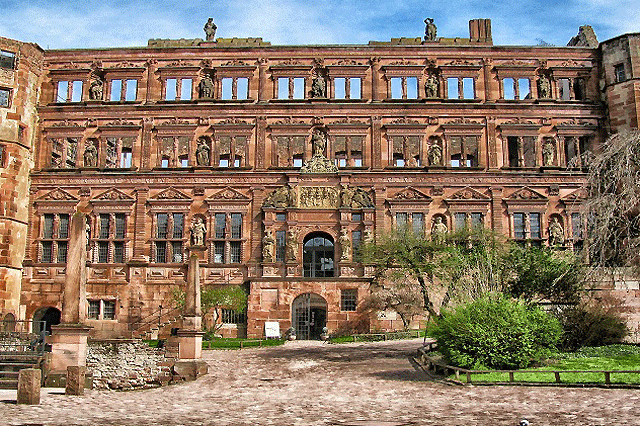
Beyond the barrel, an archway leads out to the castle terrace, serving up a celestial panorama across the old town. Along with the castle, Louis XIV’s forces laid waste to Heidelberg, which was quickly rebuilt in the prevailing Baroque style, while largely retaining the medieval labyrinth of slender, twisting lanes and alleys. Today, they are an irresistible joy to stroll, although I did notice that a weekend of partying does leave its calling card through the unmistakeable pong of urine-stained streets.
Without meaning to point the finger, Heidelberg is a big student town, who comprise a fifth of the population. Home to Germany’s oldest university, founded in 1386, the youthful verve courses through its streets, with a staggering array of spirited pubs and eateries spilling across the cobbles. Another intriguing attribute is the fact that Heidelberg was spared any major damage during World War II because it was designated a hospital city, and subsequently the headquarters for American and NATO troops stationed in Germany.
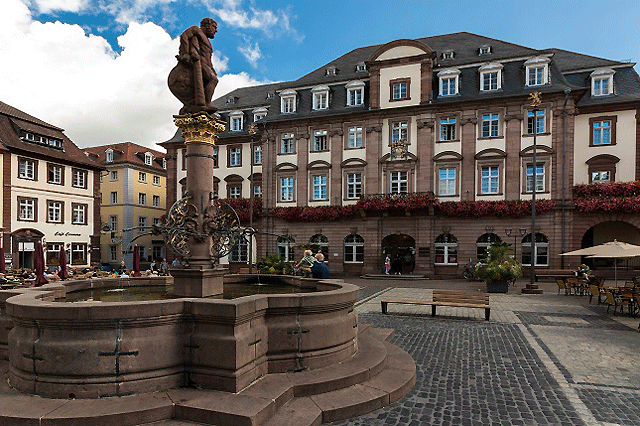
The American base only left the city three years ago, in favour of Mainz. Just off the bustling shopping street of Hauptstrasse, a fabulously quirky attraction is the Student Prison, the Karzer. From 1778 to 1914, the university’s young students were briefly imprisoned here for minor offences, such as wilfully disturbing the peace, not to mention having a leak on the street. Many of the inmates passed the time away by immortalising themselves on the walls of the prison through art. Their spirited graffiti and inscriptions can be admired today on a visit to the old student lock-up.
One of the city’s oldest squares, Marktplatz is Heidelberg’s beating heart, wrapped in glorious architecture, a majestic Hercules Fountain from 1706 to salute the immensity of the city’s reconstruction, and the lovely Renaissance-period Knight’s House. Built in 1592, it was one of the few structures to escape destruction by the French. The Church of the Holy Spirit holds centre court, serving as a striking backdrop for Heidelberg’s famed Christmas market, which spills across the square.
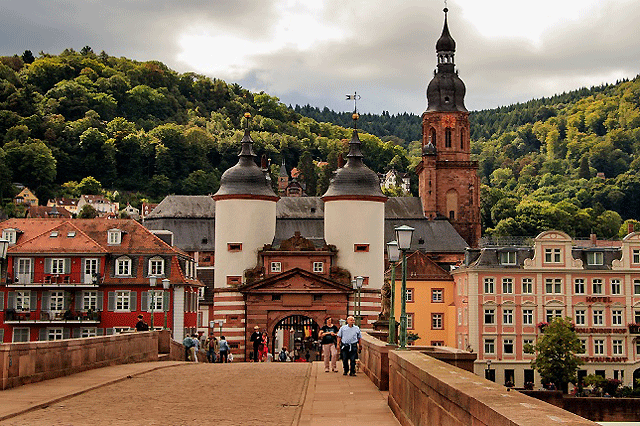
Together with its famed Bridge Gate, which was once a part of the city wall, the Old Bridge spans the Neckar River, and serves as a trusty vantage point for snapping away at Heidelberg’s storybook skyline. There are some impressive flood markings chiselled on the bridge column below the statue of its builder, Karl Theodor, denoting the horrifying height of the water, over the centuries. A tourist favourite is the Bridge Monkey sculpture.
Re-erected in the 1970s, legend has it that the bronze monkey served as a reminder to those who crossed it, to look over their shoulders from where they’d come. It is said that if you touch the mice next to the monkey, you will have many children. Across the river, Philosophers’ Walk is a crackingly good walking trail, meandering along the sunny side of Heiligenberg hill.
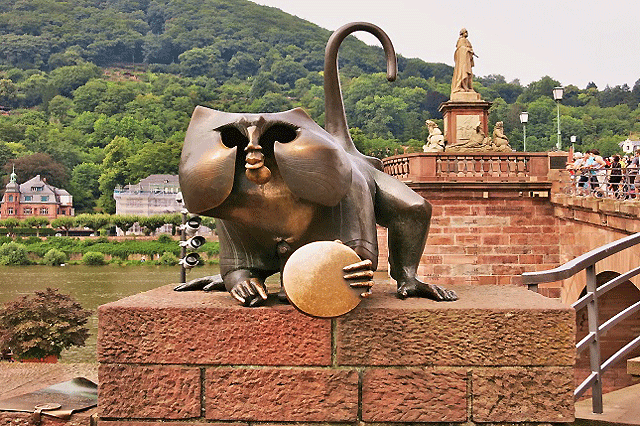
It has inspired countless scholars and poets across the centuries, and today offers an unrivalled panorama of the castle and town. As I walked up this gentle hill, that only rises to a height of 400 metres, I encountered all manner of antiquities. There’s a partially preserved Celtic fortress ring wall, the ruins of the Roman Temple of Mercury, the ruins of St. Michael’s abbey and even a gigantic Nazi-commissioned open-air stage, encrusting the hillside.
Back down in the old town, if you’re feeling peckish, Schnitzelbank is the go-to for delicious and good value German cuisine. Their Cordon Bleu hits the spot, but the garlic schnitzel is the real superstar. Vetter is an awesome brewery and beer hall, a student favourite, where I tried the Dunkelweizen, which is a dark wheat beer.
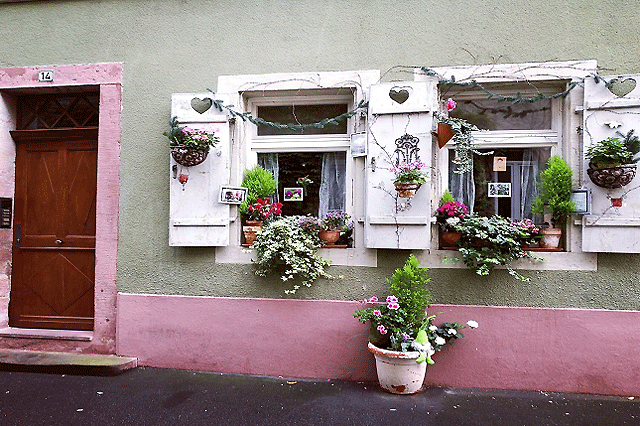
Before leaving town, wrap your lips around some Student Kisses. They’re a Heidelberg trademark, sold from Cafe Knosel, directly behind the Church of the Holy Spirit, at Haspelgass 16. These delicious chocolate cookies were deliberately crafted as a gift that young men could discreetly give to female university students, in a bid to win their affection. The original 1863 recipe is still in use today at Café Knosel, which has remained in the same family hands since the love affair with Students Kisses first began.
Romping through the German countryside on a super-slick and super-comfy DB train is holidays made easy. Heidelberg is an effortless two hour ride away from Frankfurt, if you’re travelling independently. Purchase a pass to suit your needs, in advance from Rail Europe, the experts in great rail travel. www.raileurope.co.nz

Flying direct from Singapore to 15 European destinations, Singapore Airlines offers incredible reach for Kiwis dreaming of a grand tour in Europe. Operating international flights from Auckland, Wellington and Christchurch, I flew to Frankfurt with the carrier, particularly impressed with the superb inflight service, impressive entertainment offerings on Krisworld and quality dining. For best fares and seats to suit head to www.singaporeair.com









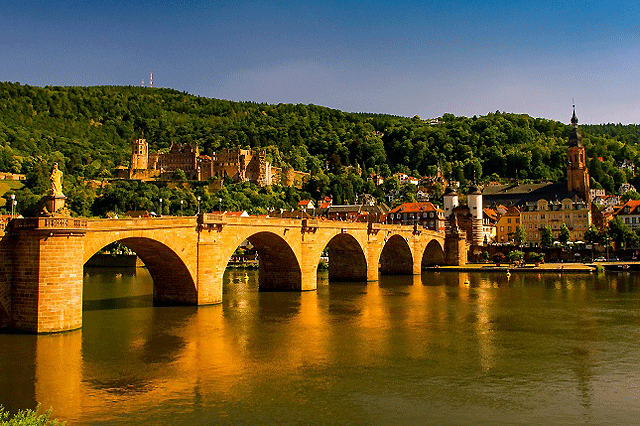
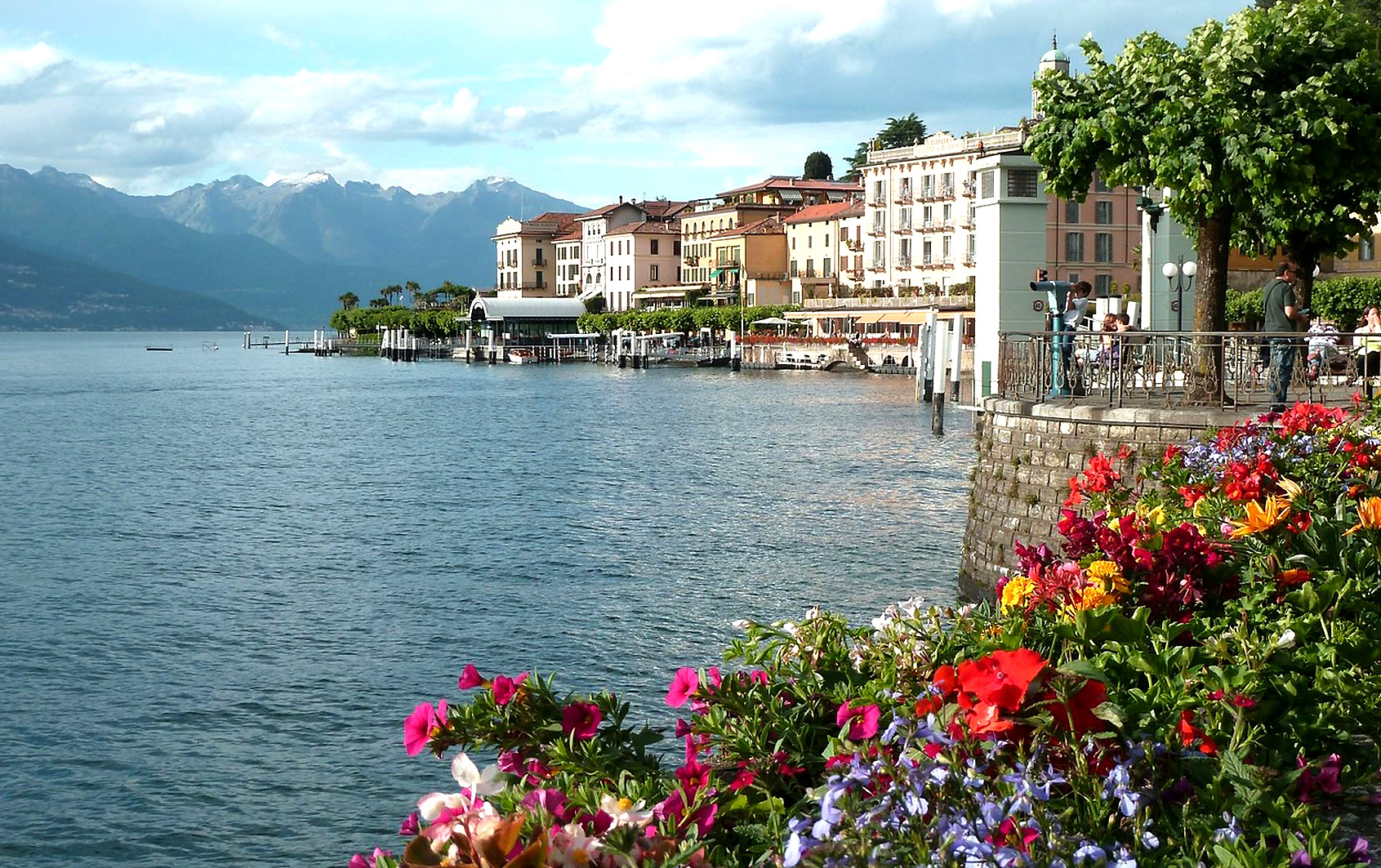

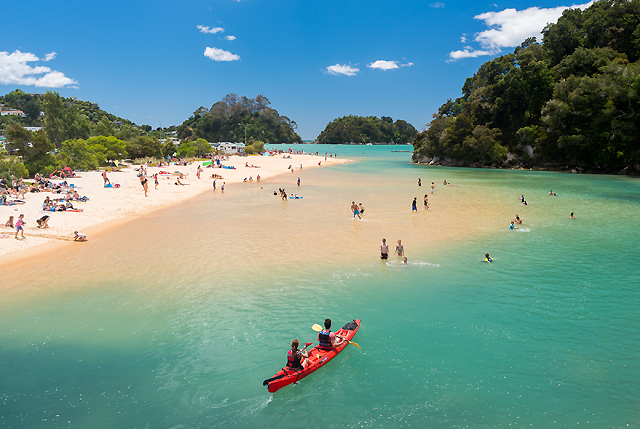
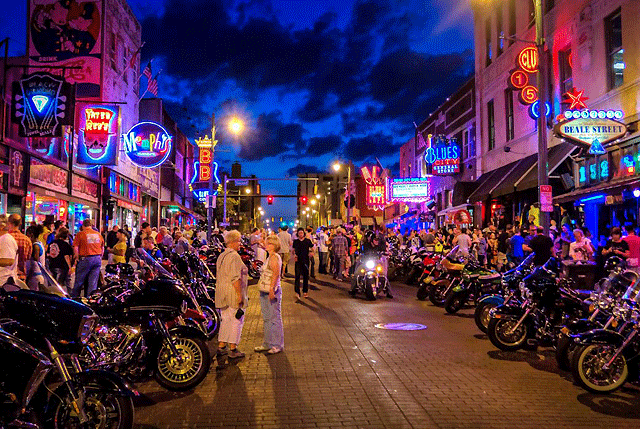
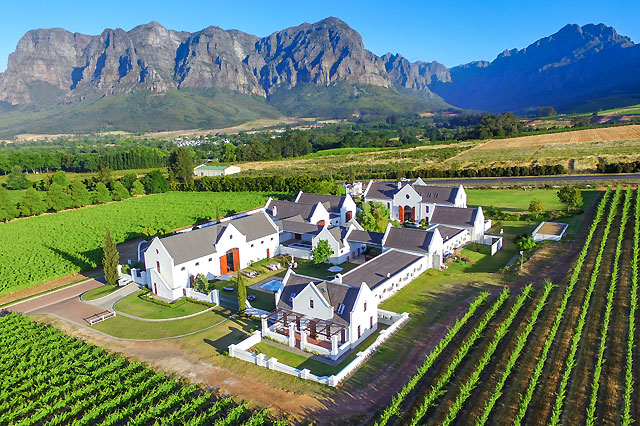
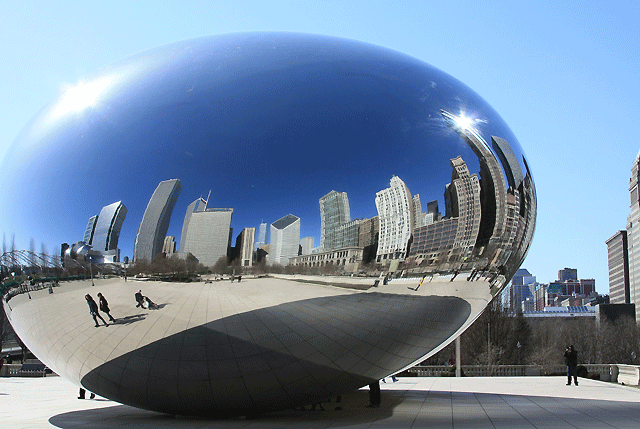
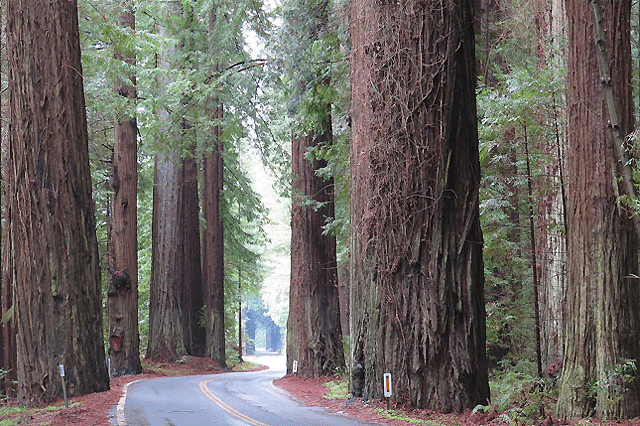




Recent Comments